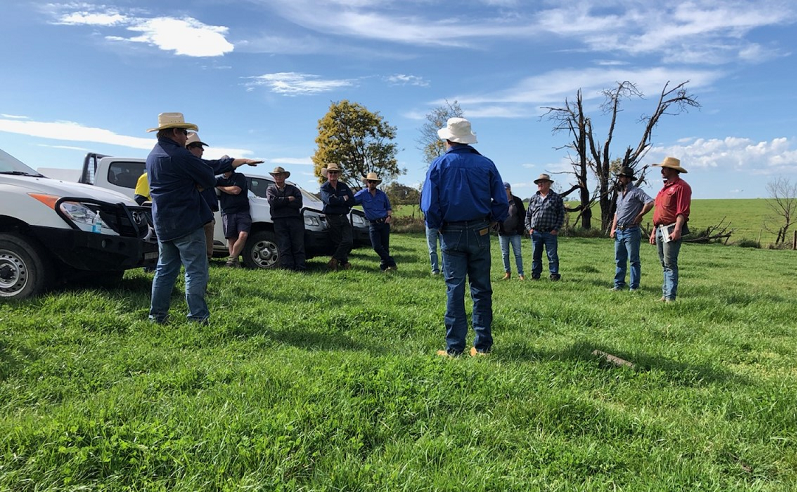Preparing pasture paddocks for Autumn rainfall
by Phil Cranney, Senior Land Services Officer - Pastures.
Preparing pasture paddocks for Autumn rainfall is no less important than backyard cricket
Prioritising resources in a farm business is arguably one of the most important tasks for managers. Livestock enterprises have their own pinch points, for example pregnancy scanning and peak lactation, where decisions can make or break the bank. Setting up your cool season perennial pasture paddocks for this growing season starts now. If you haven’t started implementing your strategy to optimise clover to grass ratio for these paddocks by Australia Day, there may be very little left in the bank to help you celebrate in 2024.
The German philosopher Hegel was quoted “We learn from history that we never learn from history”. Perhaps this quote presents a challenge for many farmers on the tablelands this year to prove Hegel wrong.
 In the interests of good business review habits, rather than nostalgia, let’s recap the top four reasons for last year’s grass dominant pastures:
In the interests of good business review habits, rather than nostalgia, let’s recap the top four reasons for last year’s grass dominant pastures:
- Stocking rate did not match pasture growth in late Spring 2021 and Summer 2021/22
- Lack of suitable (animals that can lose weight without compromising productivity) livestock to manage low value pasture in late Summer 2022
- Too wet to manage excess biomass mechanically (hay/silage making or slashing)
- Stocking density too low
Just like the family game of backyard cricket on the summer holidays, sub-clover needs some fundamentals to ensure germination, establishment and grow a sturdy root system. Surgical removal of the kids from their electronic devices is made infinitely easier when the sun is shining on the backyard pitch. Sub-clover has similar requirements for access to sunshine to successfully germinate on the first decent Autumn rains.
Keeping the old cricket bat oiled up ready for backyard action is as important as maintaining adequate phosphorus and sulphur levels in the soil of your productive improved pastures. Sub-clover is an excellent forager for soil nutrients and soil moisture, but without adequate phosphorus, root development and subsequent seeding can be hampered.
Maintaining the soil pH above 5.5 (CaCl), also ensures that the rhizobia can fix the optimal amount of the nitrogen back into the soil. Just like the clover roots and their rhizobia not enjoying the hostile low pH/high Aluminium soil conditions, no one enjoys the backyard cricket ball being mauled by the dog. No amount of sand paper can remove half a litre of dog slobber!
While facing an Uncle’s fast bowling may be less scary with an overgrown backyard pitch, it will be no batting paradise. Selection of the paddocks that are being managed for optimal clover growth in the following year should be made well before the 25th December. These paddocks should be opened up before March to ensure that clovers have some bare ground to germinate, as well as sunlight to establish.
Let’s summarise the top 4 take-home messages for preparing your pasture paddocks:
- Allocate low quality feed demand livestock to help reduce biomass in paddocks that you have selected to maximise sub-clover growth in 2023
- Ensure that the ground cover % does not fall below erosion benchmarks for each paddock and soil type
- Know your soil health of these paddocks and fertilise to ensure adequate nutrients
- Allocate resources for weed control in these paddocks, spray early for best results
Most of all, just like the 3 essentials for a game of backyard cricket (a bat, a ball and rules) – my favourite – “you can’t get out first ball”. Make room for your mistakes, review your pasture management from previous years, change things in your control and most importantly, play the ball that is in front of you.